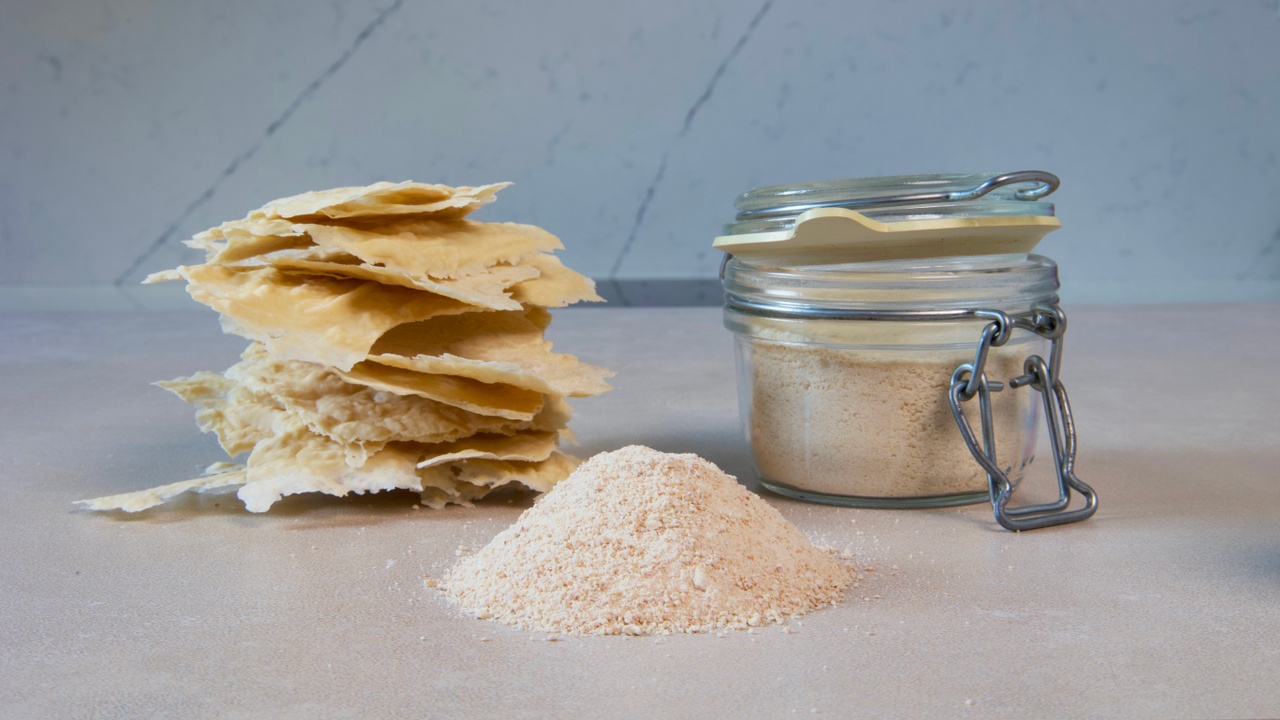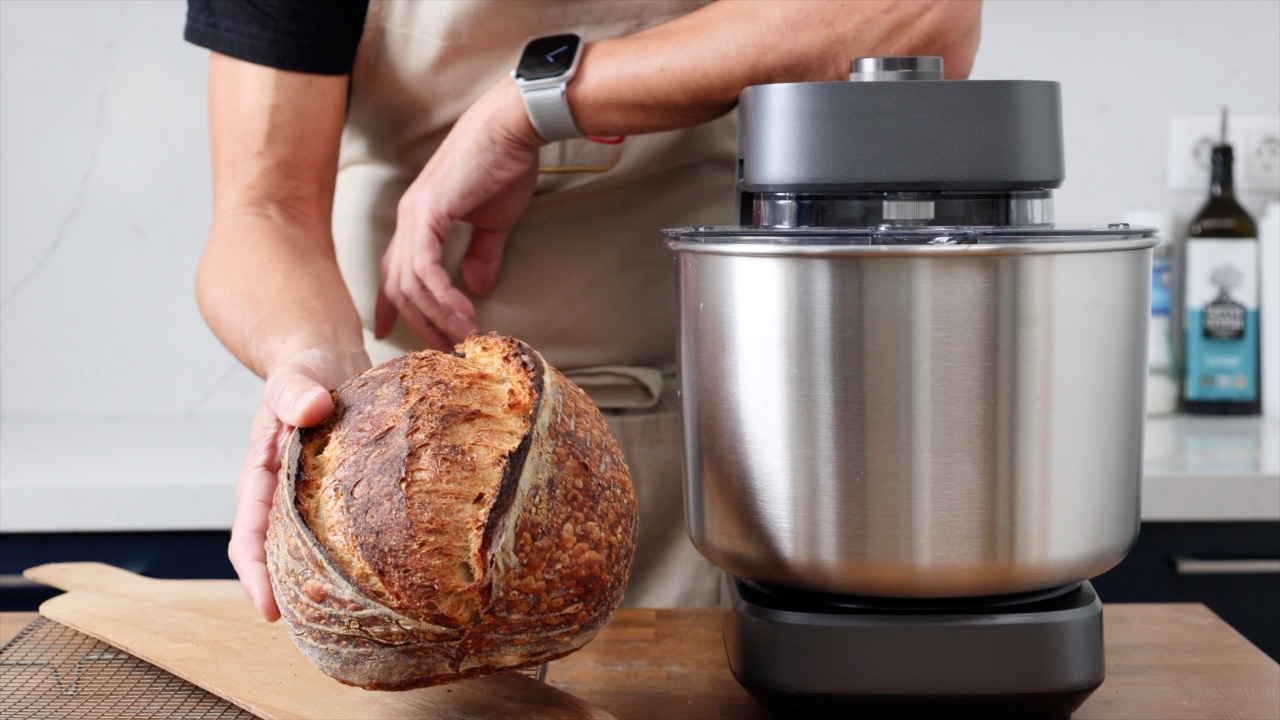How to Dehydrate and Rehydrate Your Sourdough Starter Easily

Why would you want to dehydrate a sourdough starter?
If you have recently been through the process of creating a sourdough starter from scratch then you’ll know that it takes time and money.
If you are anything like me, then you’ve been caring for your starter for a number of years.
Whichever the case, we don’t want to risk something happening to it. Drying the starter, or dehydrating it, is a great safety / backup solution and lasts for years…
It’s also super easy to rehydrate and it doesn’t take long to be ready to bake with. In the video I baked a good loaf of sourdough within 3 days of rehydrating the starter.
How long does a dehydrated sourdough starter last?
Have a look at the article I’ve linked below. 5,000 years old yeast microbes have been reawakened. In short, I think our dried sourdough will outlast us.
I’ll be doing some further tests down the road to see if the dried starter will ferment as quickly once it’s been stored for a longer period of time. Stay tuned.
BBC article on reviving 5000 year old Egyptian yeast spores
How do you use a dehydrated sourdough starter?
Once dried, the starter is transformed from a wet sticky liquid into an easy to handle powder.
As I mentioned above, long term storage is one very good reason for dehydrating. Once dried, we’ve got a blueprint of our starter suspended in powder form.
Have you got family or friends who might like to give sourdough baking a go? Now it’s easy to send them some starter in the post. I’m a fan of anything that makes sourdough baking more accessible and makes the process simple for new bakers.
A friend of mine actually uses his dried sourdough powder to add flavour to his commercial yeast breads.
How do I dehydrate a sourdough starter?
The first step is to spread the starter out on a non-stick surface. You could use a silicon mat or non-stick baking paper.
Spread the starter out into the thinnest layer possible. This will help the starter dry quickly.
My starter is maintained at 100% hydration. This means that it’s going to lose at least half its weight when I dehydrate it. In the video tutorial, I dehydrated 200 grams of starter. Once dried it weighed 90 grams.
The dehydration process is pretty straightforward. We don’t need too much heat to do this and room temperature normally works fine. The key is to have good airflow, this is normally achieved by using some type of fan.
I like to use a simple room fan to dehydrate my starter. I set it to the lowest power setting and point the fan so it is blowing over the top of the starter. It normally takes about 24 hours to dry.
The process could be as simple as leaving the starter out in the sun to dry, although I would suggest covering it with a net tent to keep the bugs away!
If you have a dehydrator then you have the perfect tool, they work perfectly for large quantities.
Can you use the oven to dehydrate a starter? Yes, but be careful. You don’t need to use any heat. You can switch the oven on so that the light and the fan are working (but with no heat). Prepare the starter on a mat or non-stick paper as I explain above. Pop this onto a baking tray and slide it into the oven. Make sure to put a sticky note on the front of the oven so that no one turns it on by accident!
Make sure the starter is completely dry before processing or storing.
I like to blitz my starter into a powder using a spice grinder. If you use this method make sure it’s clean and isn’t covered in spices. You could also use a blender or a mortar and pestle.
I should point out that the starter doesn’t need to be processed into powder. You can store it in pieces too. You can even rehydrate it in small pieces.
How long does it take to dehydrate sourdough starter?
It depends on which method you use and the temperature / humidity where you are drying it. In the video tutorial my starter took 24 hours to dry.
My room temperature was 18C with a relatively low humidity level. The room fan I was using was placed about 50cm away and set to its lowest power output.
How do I store my dehydrated / dry sourdough starter?
I use a clean, dry jar with a very tight-fitting lid. You could use a zip lock bag too. Keeping the starter dry is the most important factor.
How do I rehydrate dried sourdough starter, or how do I activate dehydrated sourdough starter?
It’s as simple as feeding with flour and water. In the video I use just 15 grams of dried starter to get a new starter active and bubbling in less than 48 hours. Here’s the feeding schedule I used.
Step 1: Add 15 grams of dried starter, 15 grams of flour, and 30 grams of water to a jar. Give the mixture a stir and pop the lid on loosely.
Step 2: Once the mixture has at least doubled in size and it's nice and bubbly, you can feed it again. For the second feed use 30 grams of the starter, 30 grams of water and 30 grams of flour. Give the mixture a good stir again and pop the lid on loosely.
Step 3: Once the mixture has doubled or tripled in size you can repeat step 2.
In the video tutorial on this page, I bake a loaf after feeding the starter 3 times. You may need to feed your starter a few more times depending on the amount of activity.
Your ambient temperature will also impact on the time it takes for the starter to get going again. The colder it is, the longer it takes for the starter to ferment and become active. The hotter it is the quicker the fermentation happens.
Patience is a key part of sourdough baking. Adjusting our expectations regarding fermentation times is important as the seasons and temperatures are continually changing.
What flour should I use to rehydrate my dried sourdough starter?
For the video tutorial I dehydrated and rehydrated a wheat starter. For the feeding process I used my everyday strong white wheat flour that I use for bread baking.
You could choose to use whole-wheat flour in the feeding process. It’s less refined and the flour retains more germ and bran. This is great food for a starter! If you decide to use whole-wheat flour I would mix it with a white flour. A 50/50 mix would work well.
I would suggest using the flour that you normally bake your bread with. As long as its a good quality flour then you should be good.
If you enjoyed this blog and would like to support ongoing content creation and help keep the website ad-free, you can click below to make a contribution.
As an Amazon Affiliate, I may earn a commission from qualifying purchases


